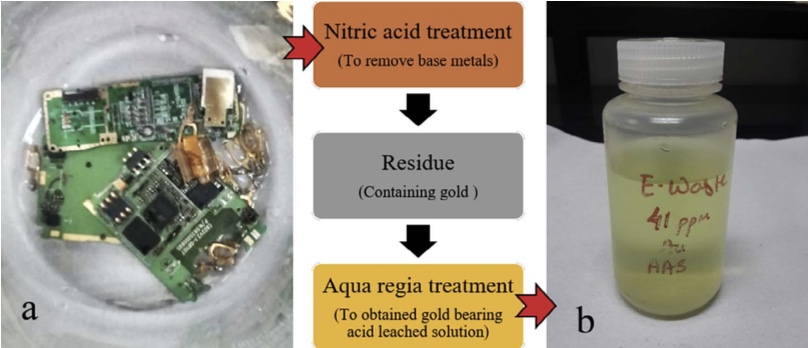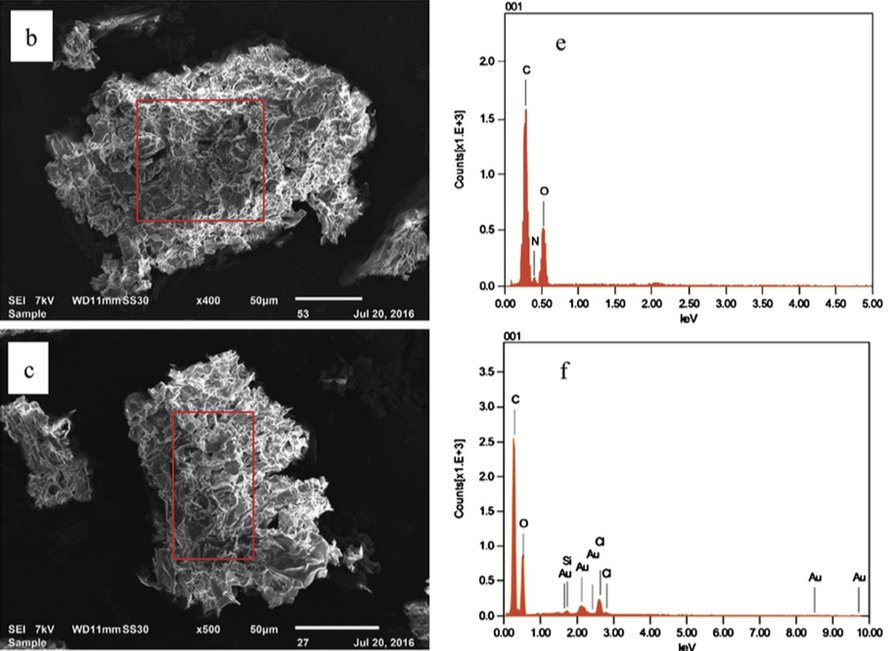Brilliant Innovation: Indian Scientists Use Leaves To Extract Gold From E-Waste!
One of the most common uses of gold today is in smartphones, but with a lifespan of 5 years, these smartphones gets thrown in the waste along with the gold. Well, no more will that be the case.

Ever since humanity discovered the metal gold, it has almost permanently nestled everywhere around us. In our modern times, gold is not only used to make jewellery but due to its various unique properties, is used in making electronic components, medicines and even as an ingredient in cooking.
Interestingly, one of the most common uses of gold today is in smartphones, laptops and digital cameras. Due to gold’s better conductivity and general resistance to oxidation and corrosion in varying environments, gold is used in circuit boards and numerous electronic connectors.
All this gold lasts nearly forever, but not the electronics it is buried in. According to CEA’s CE Product Life Cycle study, appliances like smartphones have an average lifespan of only five years – with the number dropping each year.
No wonder in 2016, the executive summary of e-waste noted a massive 44.7 million tons of e-waste in just one year.

To put that in perspective, a printed circuit board (PCBs) (used in cellular phones and personal computers) contains about 280 g/ton-waste of gold. With about 44.7 million tonnes of waste, it means that there are about 12,000 tonnes of gold in that waste, which is about 10,00,000 standard gold bars lying in trash heaps!
In fact, Japan is even looking to recycle old technology, including smartphones, to create Olympic medals for Tokyo 2020 Games.
But the problem lies in how the gold is extracted. Methods such as precipitation, ion exchange, solvent extraction, and flotation for gold recovery are available. But these methods have major disadvantages like the use of toxic chemicals, high reagent requirements and the generation of toxic secondary wastes that require proper disposal.
Hence a better alternative for the extraction of gold is the need of the hour. And this alternative is what researchers from across India have developed using plant leaves.

Bharat C. Choudhary and Amulrao U. Borse from North Maharashtra University, Debajyoti Paul from Department of Earth Sciences, Indian Institute of Technology Kanpur and Dipak J. Garole from Directorate of Geology and Mining, Government of Maharashtra have created this method. Let’s have a look.
So how exactly will leaves help extract gold from waste? To understand this, let’s break it down into smaller parts.
Hey, the latest addition to ISRO: ISRO to launch the GSAT-6A, Here’s All The Reasons Why It’s Special
So, to extract the gold, the scientists need:
1. A bio-sorbent that adsorbs gold.
2. To remove gold from the e-waste
3. To use the bio-sorbent to adsorb the gold
4. To retrieve the gold from the bio-sorbent.
For the first step, the leaves of Lagerstroemia speciosa, commonly known as “Pride Of India”, are used. These can bond to specific metal ions, e.g., gold. But using only the leaves to adsorb gold is not very effective.
So scientists made a bio-sorbent with the leaves and polyethyleneimine (PEI). Polyethyleneimine (PEI) has been widely used for the adsorption and recovery of various metal ions from aqueous media.
First, Lagerstroemia speciosa plant leaves are collected, washed with ultrapure water, air dried at room temperature and powdered.
Then PEI is used to prevent leaching and to increase adsorption.
The leaves powder is suspended in a PEI solution and stirred for four hours at 25 °C using a magnetic stirrer. This solution is developed into a PEI-LS bio-sorbent solid, separated from the suspension using vacuum filtration.

Next, the scientists needed to extract gold from the e-waste.
This is done by treating the waste to various acidic treatments, obtaining an acid-leached solution of the gold.
This acidic gold solution is then mixed with the PEI-LS bio-sorbent under experimental conditions and viewed under a scanning electron microscope and in an energy-dispersive X-ray spectroscope.
The EDS spectrum of gold-sorbed PEI-LS reveals the presence of gold peaks, with an adsorption rate of 97.9%. You can see the electron microscope and spectroscopic images of before and after of the bio-sorbent.

Now, the gold has to be recovered from the bio-sorbent. This is done using various eluting agents. Acidic thiourea has the most recovery, with about 96.9% of the gold retrieved from the bio-sorbent.
And there you have it – a low-cost and eco-friendly bio-sorbent by a simple PEI modification of Lagerstroemia speciosa leaves powder that will extract gold from e-wastes!
This bio-sorbent can even be used to recover gold from the wastewater of gold mines or jewellery polishing water. What’s more, the bio-sorbent has a good reusability rate after each adsorption process.
Hey, see what other scientists are up to: IIT Guwahati Folks Create Superhydrophobic Coating That Mimics Lotus Leaves!
Like this story? Or have something to share?
Write to us: [email protected]
Connect with us on Facebook and Twitter.
NEW: Click here to get positive news on WhatsApp!
If you found our stories insightful, informative, or even just enjoyable, we invite you to consider making a voluntary payment to support the work we do at The Better India. Your contribution helps us continue producing quality content that educates, inspires, and drives positive change.
Choose one of the payment options below for your contribution-
By paying for the stories you value, you directly contribute to sustaining our efforts focused on making a difference in the world. Together, let’s ensure that impactful stories continue to be told and shared, enriching lives and communities alike.
Thank you for your support. Here are some frequently asked questions you might find helpful to know why you are contributing?


This story made me
-
97
-
121
-
89
-
167













